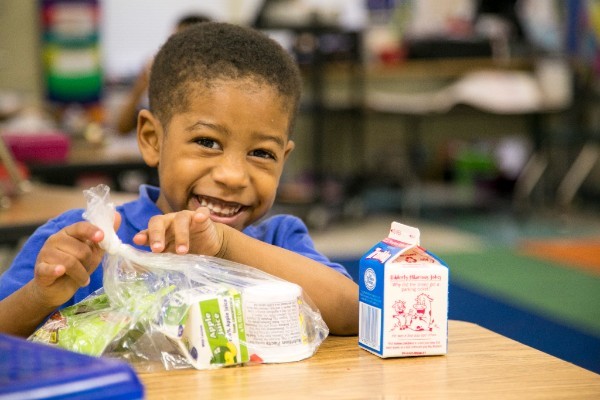Empower Missouri and Operation Food Search put out the 2016-17 “Missouri School Breakfast Report.” Participation in the School Breakfast Program continued to grow in Missouri in the 2016–2017 school year, providing a healthy morning meal to more than 247,000 children each school day. This is good news for Missouri schools and families. The School Breakfast Program is an important tool for educators to ensure that students have adequate nutrition to learn and thrive and not be distracted by hunger or lack of proper nutrition in the classroom.
The school nutrition programs are a vital component of the federal safety net for low-income families, helping stretch limited budgets and provide assurance for parents that their children can receive healthy meals at school each day. High breakfast participation can be attributed to two key strategies: adopting community eligibility (when possible) and implementing breakfast after the bell service models, such as breakfast in the classroom, “grab and go,” and second chance, all of which reach more children than the traditional method of serving breakfast in the cafeteria before the school day starts.
While gains are being made, and more schools are adopting best practices, there is still significant variation among the school districts that provide breakfast to their low-income students. In the 2016–2017 school year, 59.4 low-income students ate school breakfast for every 100 that ate school lunch in Missouri. In order to meet the national benchmark set by the Food Research & Action Center (FRAC) of reaching a ratio of 70 low-income children receiving school breakfast for every 100 receiving school lunch, low-performing school districts must take every opportunity to increase school breakfast participation, to ensure Missouri students do not miss out on the academic, nutrition, and health benefits of the program.
This report examines key findings regarding school breakfast participation rates in Missouri school districts that participated in the School Breakfast Program and the National School Lunch Program during the 2016–2017 school year. In addition, this report informs about the School Breakfast Program’s benefits and how it works; offering breakfast at no charge to all students, potentially through community eligibility; breakfast after the bell models; examples of top-performing school districts, and school breakfast funding information. A list of the top-performing school districts is on pages 10 and 11. Separate from this report is a breakdown of school breakfast participation by
school district.
